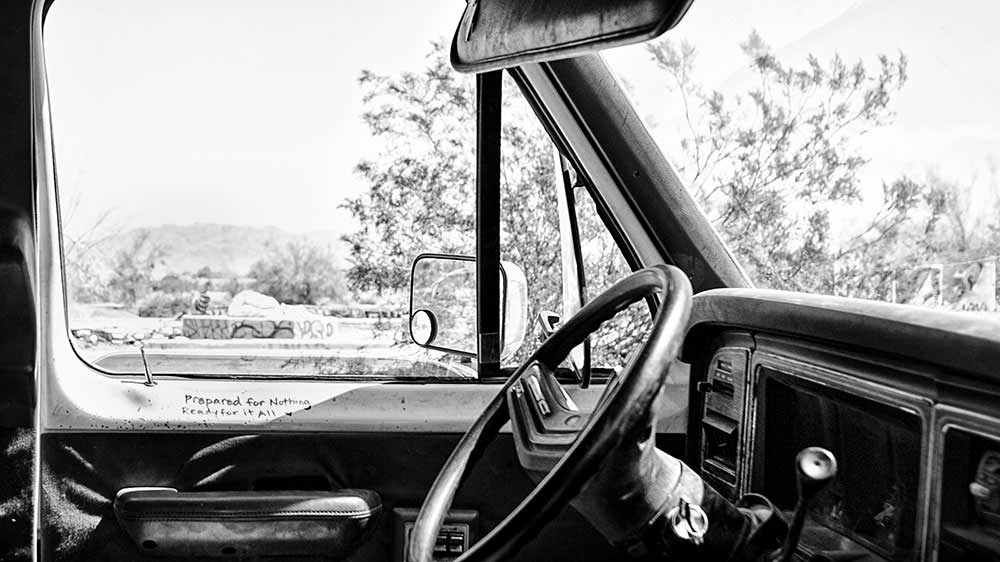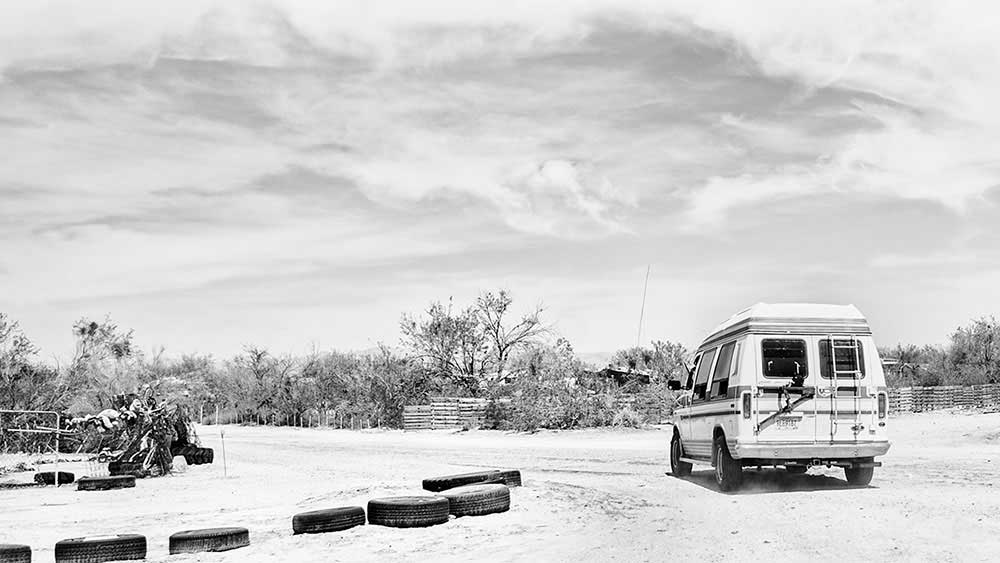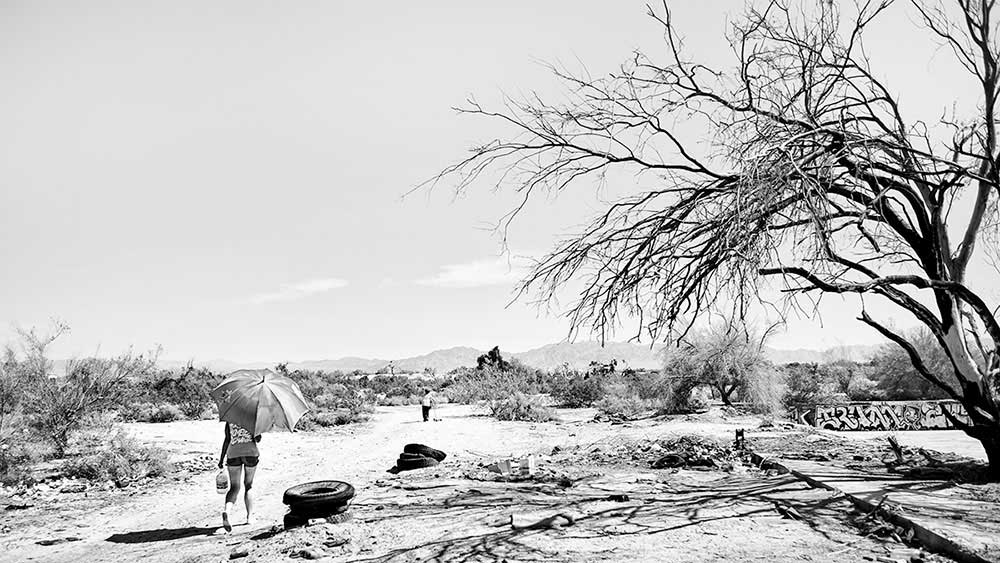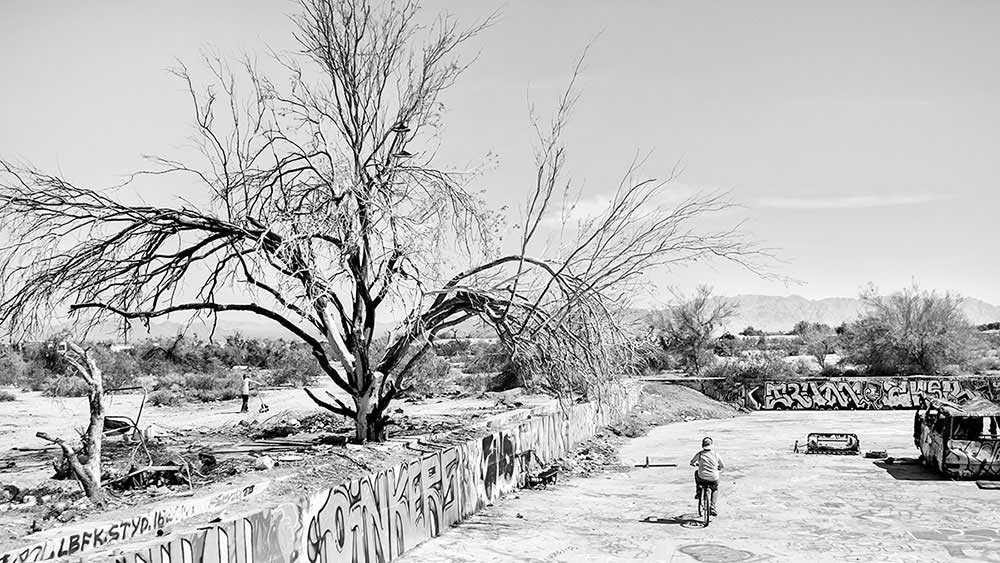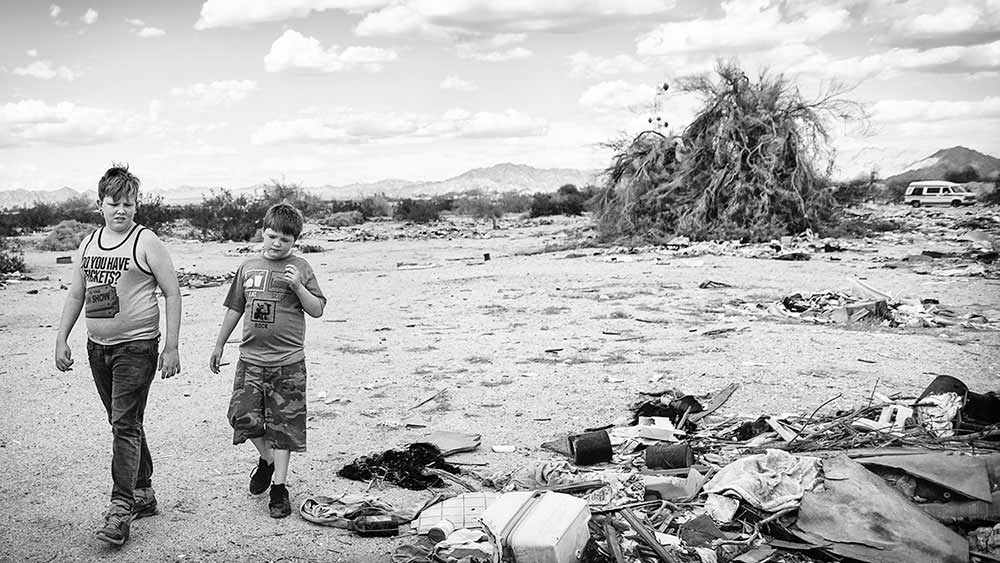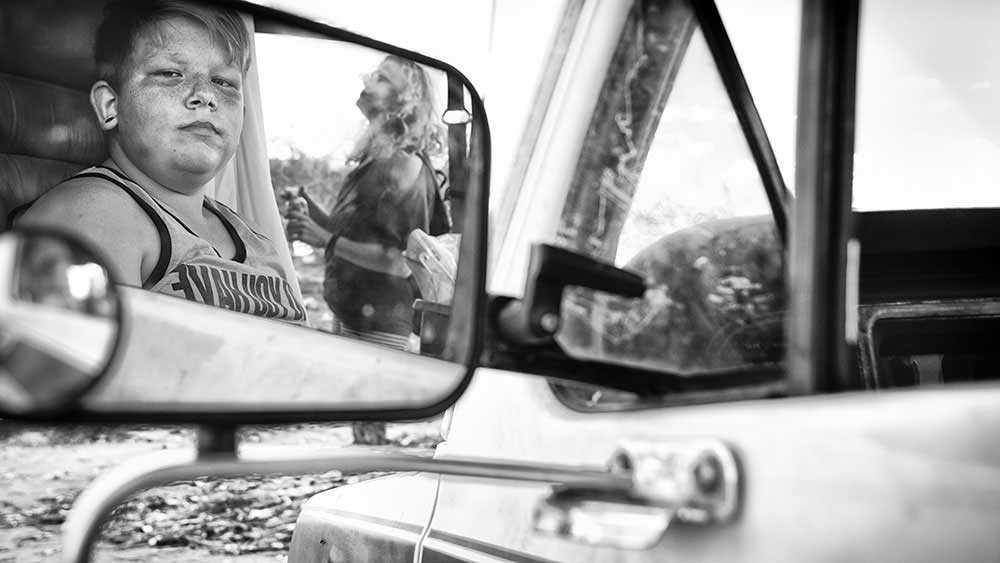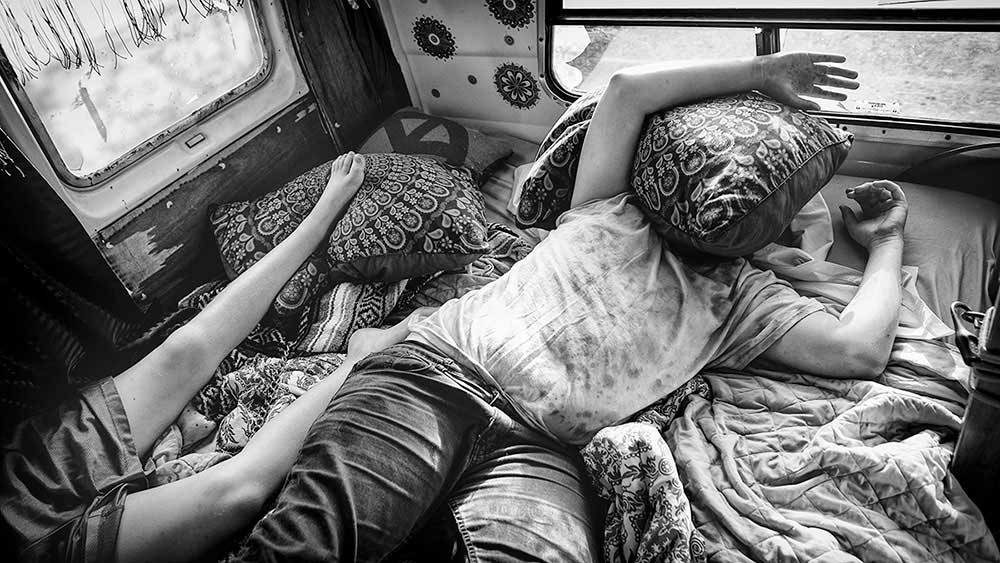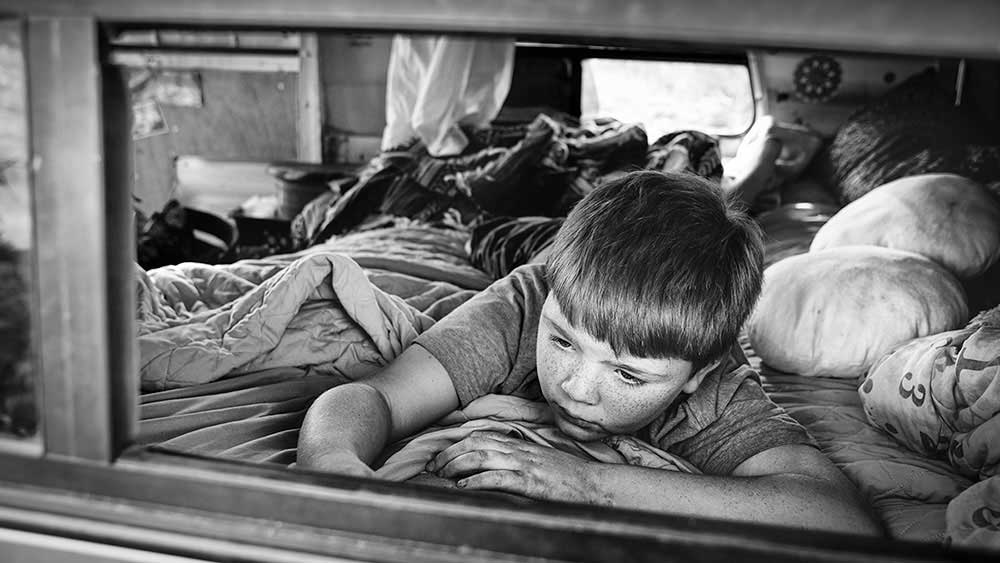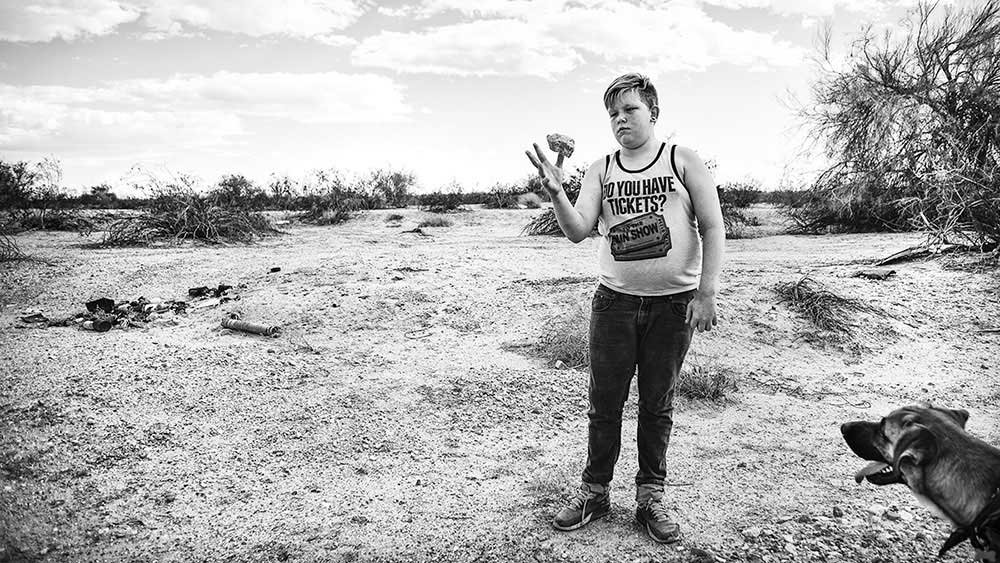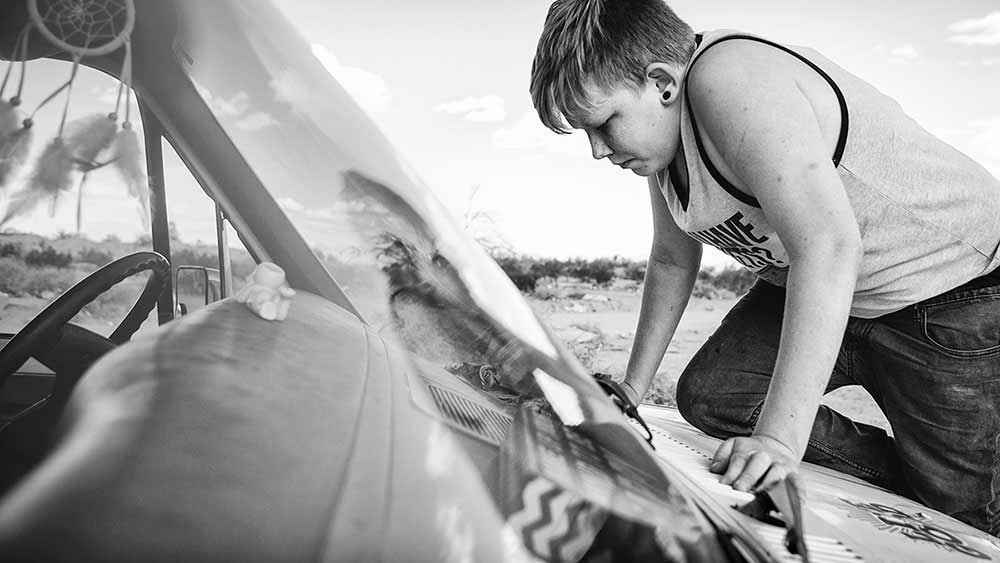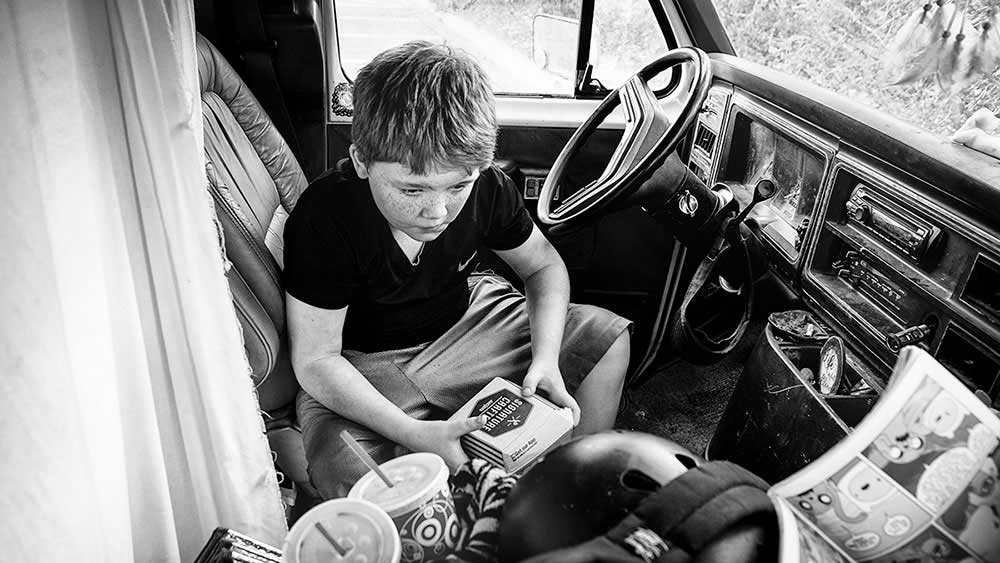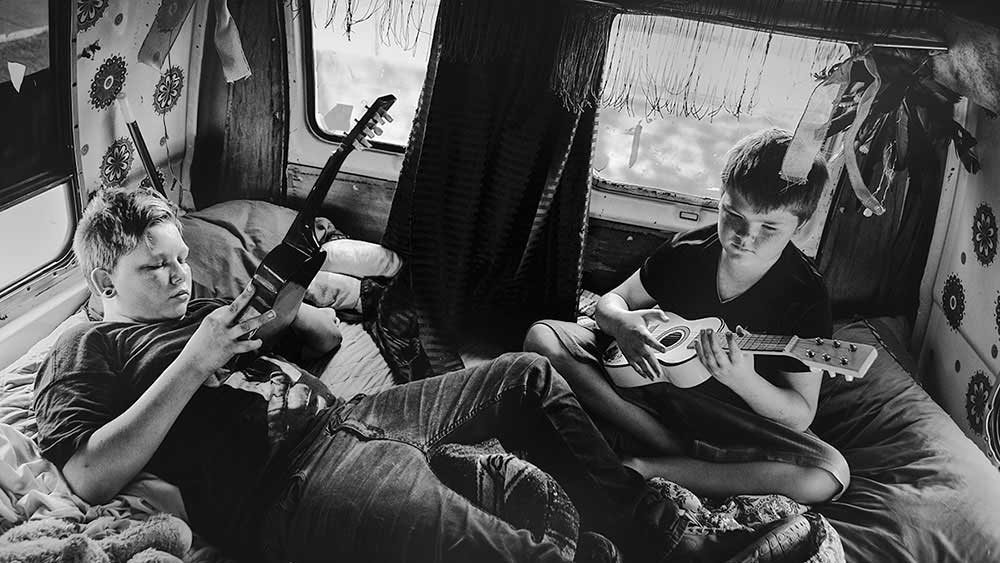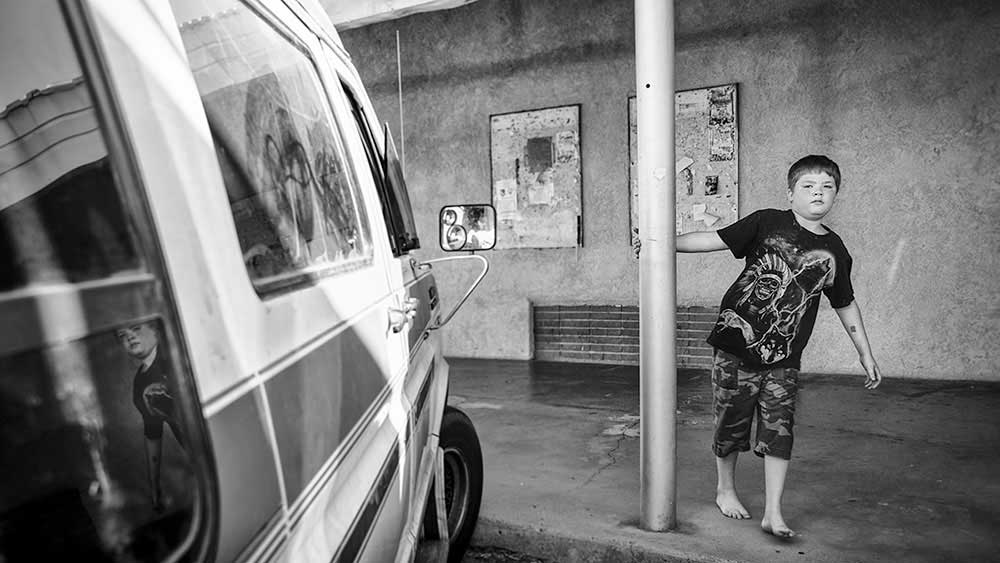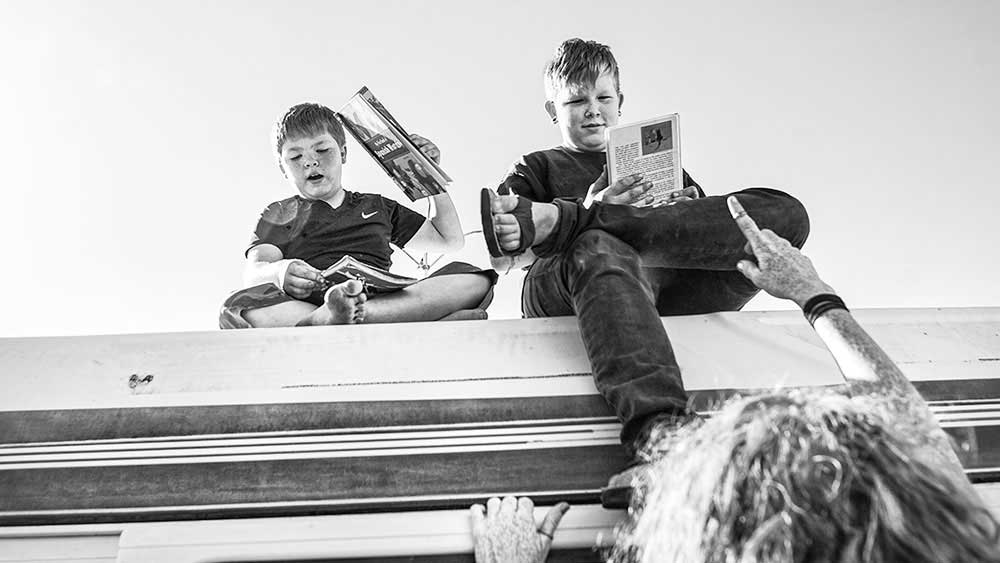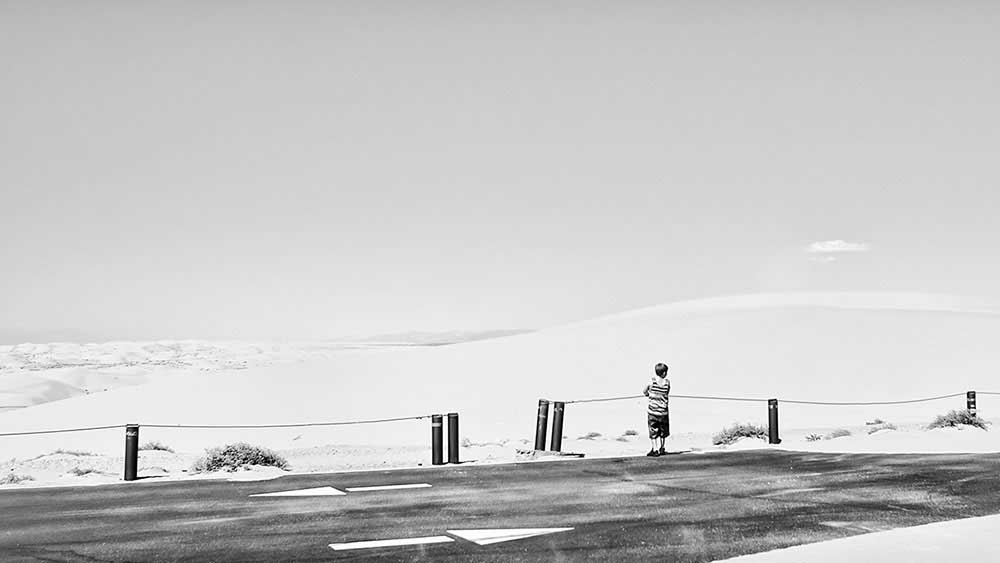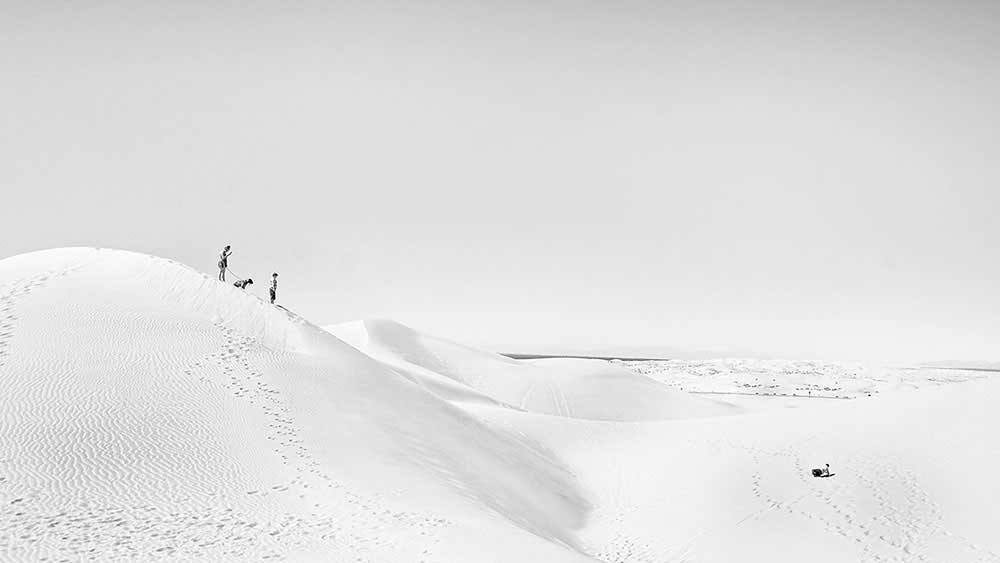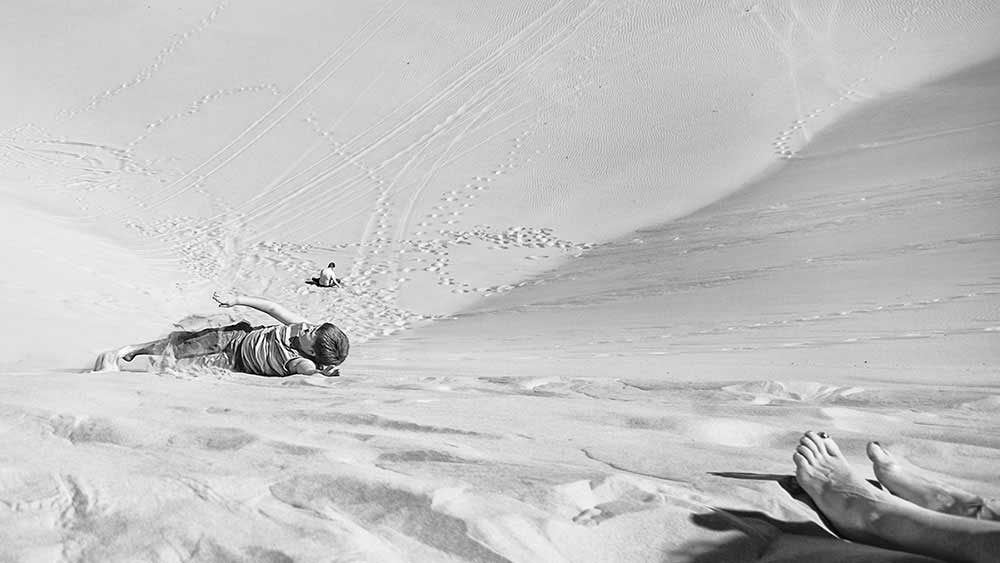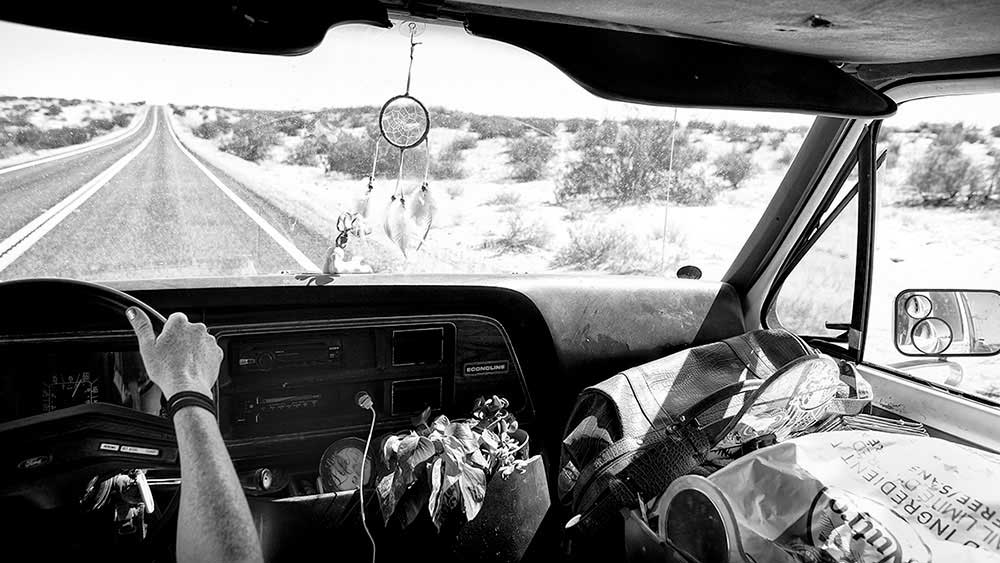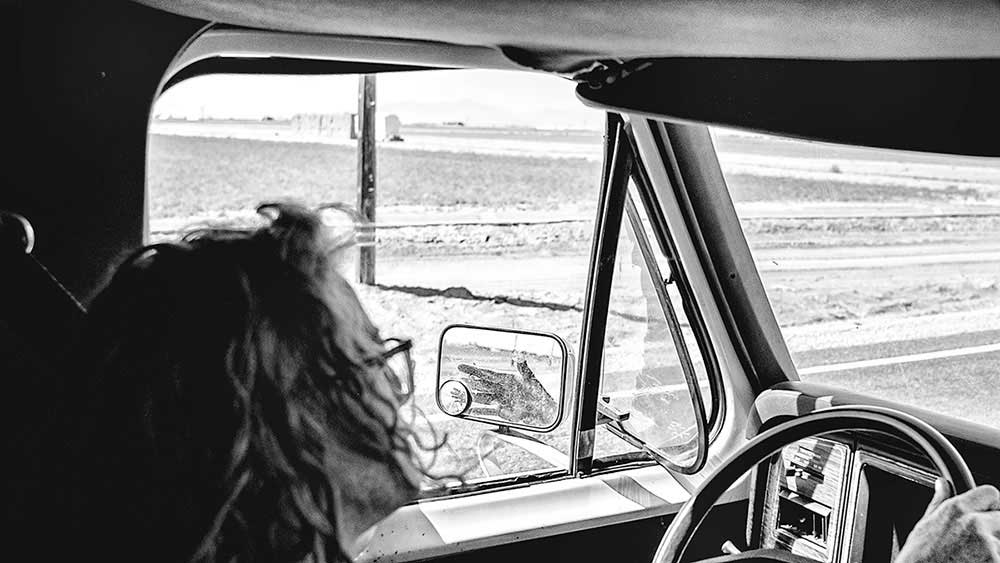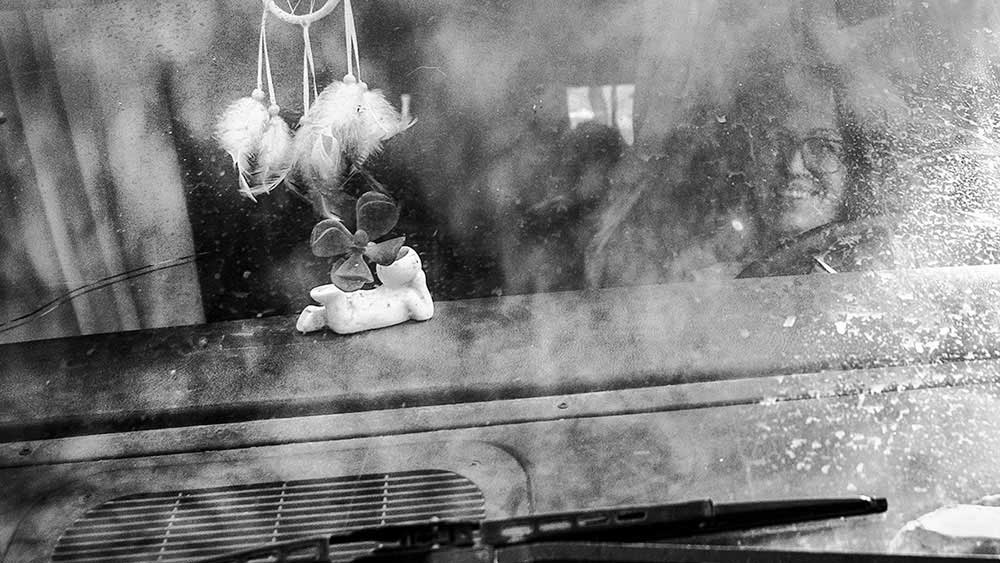Dia & Sons _ Blowin’ in the Wind “Prepared for nothing. Ready for it” Who has ever experienced that feeling of wanting to pack up everything and leave? To slam the door and take the tangent? To say, «Screw it! » once and for all and finally live their dreams? We all thought about it one day but alas, the routine, the comfort or the fear of the unknown brought us back reason. But not her. One day, Dia decided to ditch everything to achieve her biggest dream: take the road and live in a van with her two sons, Jagger and Bishop.
Since March 2018, in this small space, the family has been travelling the roads of the United States to their own pace, the one of their desires. The mother and the children have arranged their new home, their new interior, and organized their days along the miles and stages of their ongoing journey. In this nomadic and intimate closed house, they will reinvent a new family life and thus satisfy their need for freedom.
Dia’s decision seems admirable, a little made or even, at times, dangerous. But no matter how we look at her chosen lifestyle, it cannot leave us indifferent. Consciously and unconsciously, he is putting us in front of a decision that many of us would not be able to make. Her choices are a mirror to our own limitations; it questions us about our comfort and our real ability to achieve our dreams. Dia has decided to live free even if it involves risks and sacrifices. She decided to put herself on the margins of society, to live on the edge of this system in order to be happy with her sons, and to pass on her values and beliefs as her legacy. And she doesn’t care if we judge her. In the spring and fall of 2018, I followed Dia and her sons closely. I photographed them in their newly acquired daily lives in the most genuine and simple moments of this family’s journey. With this photographic series, I wanted to show, from within, an impulse of freedom that runs along the road, and that only a vast territory can allow.
About Alain Licari
Born in France, I’ve lived in Spain and now enjoy a life in New York City. A self-taught photographer, I am inspired by traditional black-and-white humanist photography, particularly the great masters like Sebastiao Salgado and Raymond Depardon.
Traveling around the globe, I create photo essays that cross art photography with photojournalism. I attach importance to producing an elegant photo —une mise en scène—in a geographical, social and humanistic context, with an emphasis on the latter. By catching the eyes of another, I seek a moment and a connection—in the humblest way—with the human soul. Even more, I want these simple shots of everyday life to raise questions. After my time in the United States, topics related to politics, migration and the diversity of the American Continent—both the North and the South—have gained particular interest.
The personal concept of mise en scène is important to my photographic work. Though I do not take part in the composition of what plays out before me, it’s important that, while shooting in a street, I find a balance between the different plans of the scène, looking for harmonies and connections with the lines and the characters who comprise the photograph. In this way, I build a narration that will be interpreted by the future spectator.
Finally, I choose to make primarily black-and-white photographs in order to create a particular relationship between the viewer and the print. Black-and-white encourages a certain distance from the subject, keeping the meaning of the photo open and fluidI appreciate when the viewer’s eyes are guided subtly and gently through tone and light, allowing each person to slip into her or her interpretation and quietly find their own meaning within. [Official Website]



